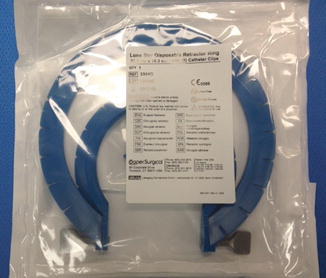Open surgery
Catheters
Diluted indigo carmine solution
Yellofin® Stirrups (Allen Medical Systems, Hill-Rom Company, Batesville, IN)
Cystoscope
Weighted vaginal speculum
Uterine tenaculum
Allis forceps
DeBakey forceps
Metzenbaum scissors
Mayo scissors
Deaver retractor
Vaginal handheld retractors
Self-retaining retractors
Stamey needle
Raz double-pronged needle
Heaney needle holder
Capio device
Phaneuf clamp
Surgical sutures
Vaginal packing
Laparoscopic surgery
Veress needle
Laparoscopic trocars
Ligasure™ (Covidien, Dublin, Ireland)
Harmonic® scalpel (Ethicon Endo-Surgery, Inc., Johnson & Johnson, New Brunswick, NJ)
Laparoscopic forceps
Laparoscopic scissors
Robotic surgery (Da Vinci® Surgical System) (Intuitive Surgical, Inc., Sunnyvale, CA)
Monopolar scissors
Bipolar cautery
Dissectors
Forceps
Needle drivers
Instruments Used for Open/Vaginal Surgery
Uterine Tenaculum (Fig. 2.1)
Tenacula are useful instruments for grasping and holding tissue. The piercing hooks of a tenaculum can be anchored onto areas such as the cervix. The term tenaculum is derived from the Latin word “tenere” which means “to hold or grasp.” Uterine tenacula can be made of stainless steel, which makes them reusable after sterilization, or of plastic as disposable devices.
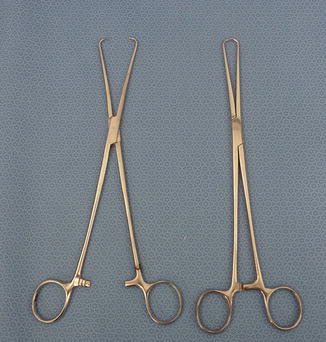

Fig. 2.1
Uterine tenaculum
Allis Forceps (Fig. 2.2)
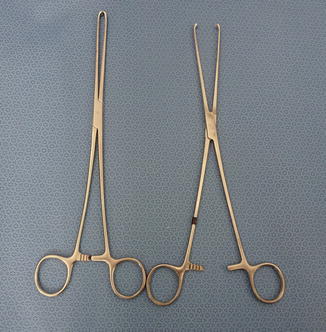
Fig. 2.2
Allis forceps
DeBakey Forceps (Fig. 2.3)
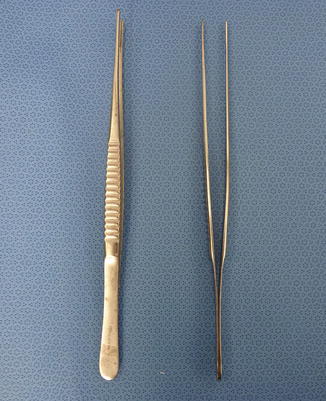
Fig. 2.3
DeBakey forceps
Metzenbaum Scissors (Fig. 2.4)
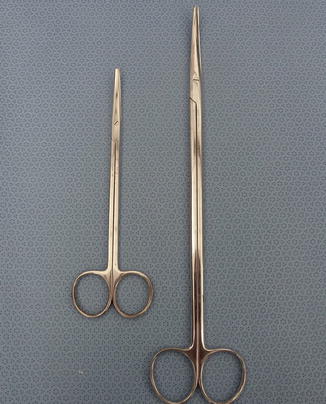
Fig. 2.4
Metzenbaum scissors
Mayo Scissors (Fig. 2.5)
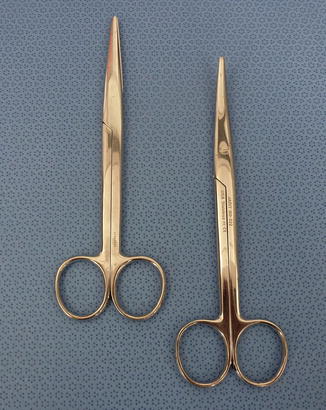
Fig. 2.5
Mayo scissors
Deaver Retractor (Fig. 2.6)
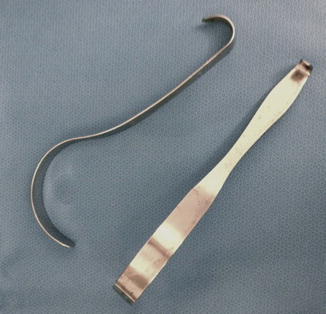
Fig. 2.6
Deaver retractors
Vaginal Handheld Retractors (Fig. 2.7a, b)

Fig. 2.7
Vaginal handheld retractors
Self-Retaining Retractors (Fig. 2.8)

